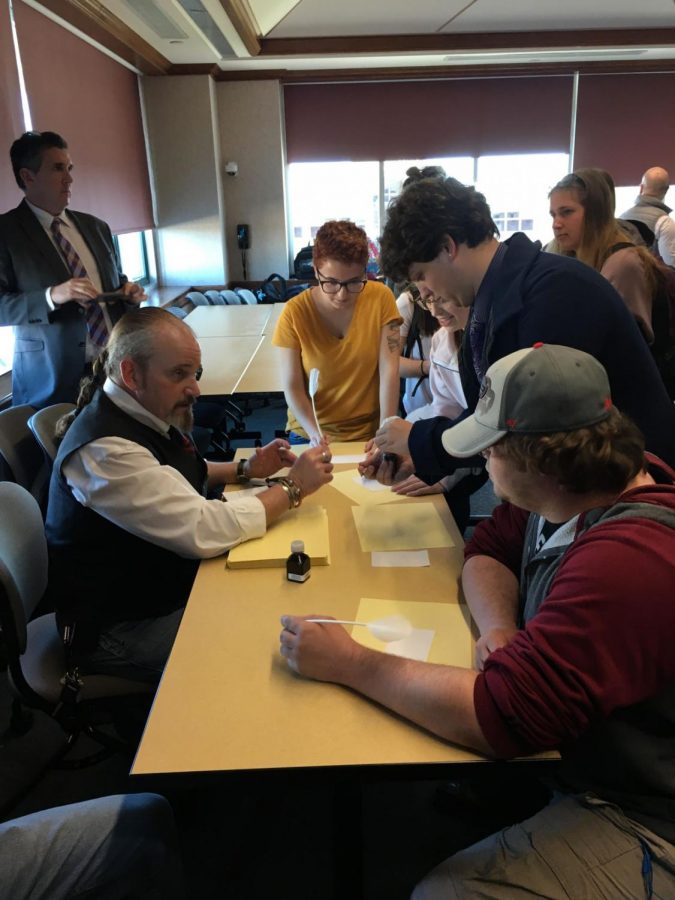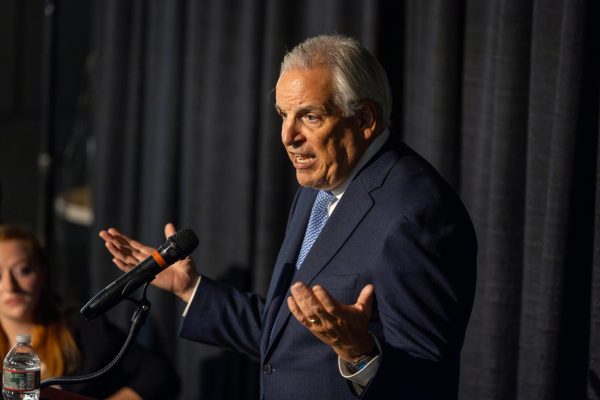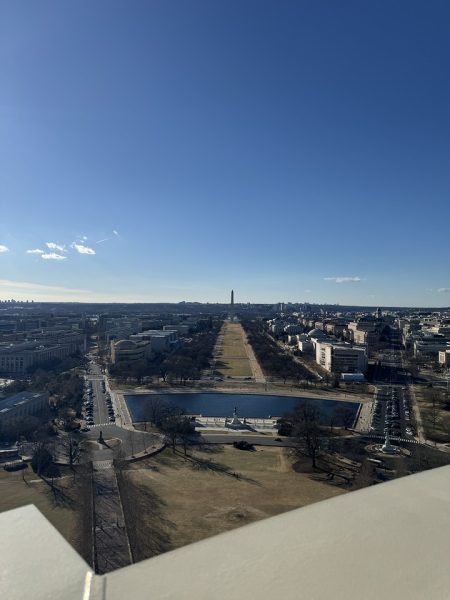Original Roger Williams letters bring a glimpse of history to campus
Roger Williams University hosted an exhibition from the Rhode Island Historical Society (RIHS) on April 9, which included two original letters from Roger Williams himself. The presentation started with the students in attendance engaging in a digital analysis of one of the letters.
The Folger Library provides a database that allowed the students to participate in a paleographic competition. The goal of the competition was to accurately decipher the complicated writing style and language. The group with the most lines correct, “The Roger Dodgers,” won. The letter was challenging to comprehend because of the old English spelling and grammar. For example, the word liberty was spelled “libertie,”and dashes indicate that more letters were intended to be in the sentence or word.
Dr. Julie A. Fisher, the facilitator of the digital analysis, said she was “very impressed by the interest of the students.”
After the friendly competition concluded, Professor Carrington-Farmer announced the letters had arrived. This was an exciting event for the University because it’s a rarity for the RIHS to allow the letters to be transported.
“This is the first time the original letters have been on campus,” Carrington-Farmer said. “It’s a big deal because the students have learned about it in class but, now they get to see it in person!”
The first of the letters was from May 2, 1639, sent from Roger Williams to John Winthrop. The second was from Sept, 13, 1639, sent from Williams to William Field. The entire presentation was sparked by Dean Jason Jacobs. He makes it a priority to involve as many students as he can in the Roger Seminars. Events such as this one educate students about the background on which the college was founded on.
This concept is put into practice through presentations like “Letters on Display” and other experiential learning events. Last year, a group of freshman traveled to England to retrace Roger Williams’ steps. They saw where he grew up and went to university, along with various other stops.
In addition to the letters, Park Ranger John McNiff held a “writing with a quill” workshop. He instructed the event’s attendees on how to craft 17th century handwriting. McNiff, an experienced calligrapher, provided goose quill feathers and walnut ink for the participants to use. McNiff advised that using only down strokes would be the most effective way to write.






